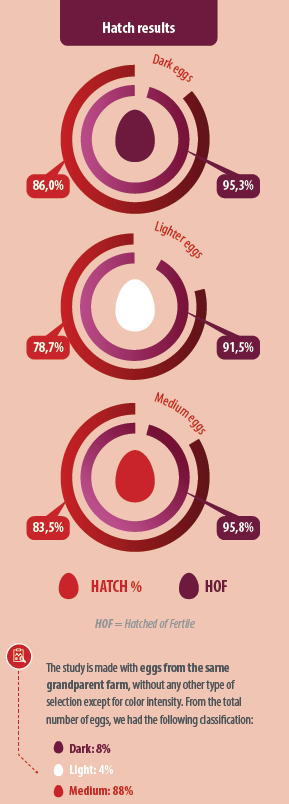Hatchery
Classification of hatching eggs from a breeder flock
To read more content about aviNews 2019 ENG
Hatchery
To read more content about aviNews 2019 ENG
Content available at:
Español (Spanish)
Not all hatching eggs entering a hatchery are of the same quality or have the same hatching potential. Therefore, we must classify them according to their:
The hatching eggs must be:
Not all hatching eggs are the same: we can find them with different hatching potential and even different microbiological quality of the day-old chick. Among them, we can highlight eggs with: 
It has always been considered that the greater the intensity of the shell color, the greater its quality. This may be due to a possible relationship between the pigmentation and calcification processes of the eggshell.
With age, the weight of the shell is more or less maintained but as it increases in size, the shell thins. Furthermore, shell coloration is significantly affected, fading in both color and quality as flocks get older.
In field studies, coloration has been found to correlate slightly significantly with the egg’s specific gravity, which is one of the parameters of shell thickness.

Dark eggs hatched the best, with a rate of 2.5% higher than medium eggs and more than 7% over light colored eggs. It is striking how the hatch of fertile (HOF) of this group is at 91.5%, while the medium and dark eggs are above 95%. This is due to the fact that the lighter coloured group had equal levels of fertility, but the poorer shell quality led to excessive moisture loss, causing early to late mortality.